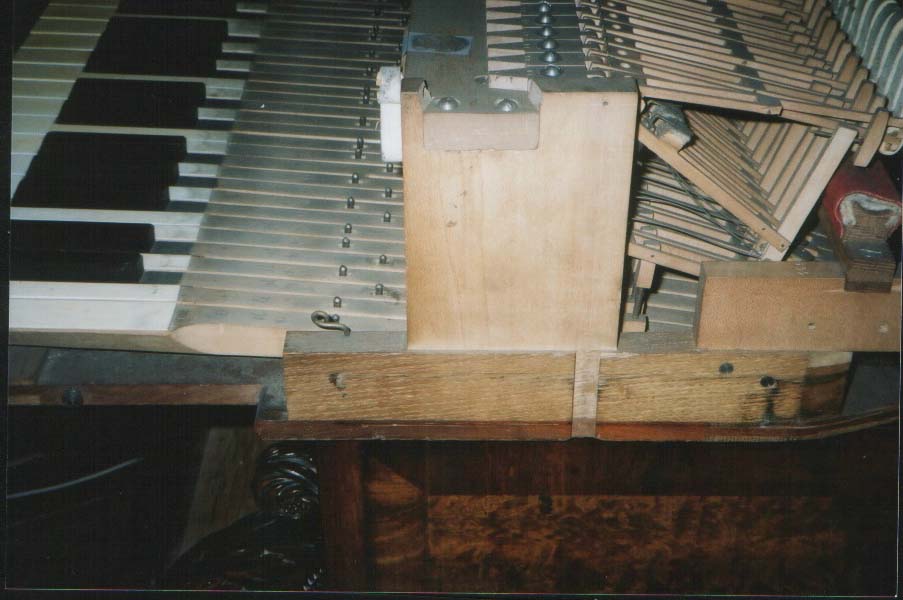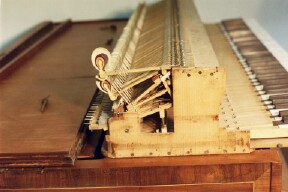
Piano Design
Dynamics of Piano Action Mechanisms
 |
Piano Design |
Stephen
Birkett
|
Research
Piano Design
Piano Action Dynamics Felt High Speed Imaging Organology Physical Systems Animal Growth Modelling Environmental Systems Teaching
Music
|
This is a three year research
project (2002-2005) involving a collaboration with a leading piano manufacturer.
The objectives are to:
| ||||
| The piano action model represents the kinematics and kinetics of the action components as discrete, flexible bodies interacting through contact surfaces that have compliance and friction. Kinematics is related to component geometry and spatial relationships; kinetics studies component motions and how these are related to forces. Together these two constitute a complete dynamic model. Graph-theoretic modelling techniques for general multi-body dynamic systems are being developed by the Motion Research Group and, in particular, applied to a variety of mechanisms and machinery. Symbolic nonlinear equations of motion can be automatically generated and adjusted according to component parameters and geometry. Numerical methods for solving the governing stiff system of ordinary differential equations (ODEs) are used to generate solutions automatically for a given set of action parameters and interconnection topology. Dynamic response to a specified input, in terms of the computed motions of all action components, is reported and displayed through animation. The model is being experimentally validated under a range of conditions and for a variety of modern and historical piano action designs. There will be significant undergraduate and graduate student participation in both the experimental and computational aspects of this work. | |||||
| |||||
Historical piano actions | |||||
A 19th century Erard
double repetition action from an 1836 piano is shown on the right.
This 'action échelle' configuration was used from the 1820s
until about 1840.
|  | ||||

| |||||
Many pianos with
the action échelle were retrofitted by the factory with
the more modern robust action design shown on the left, which was used
from about 1840. | |||||
The Brown piano action was used in Chickering grand pianos until late in the 19th century (ca1879?). The diagram shown below is from the 1843 US patent #2934. | |||||
| |||||
|
|||||